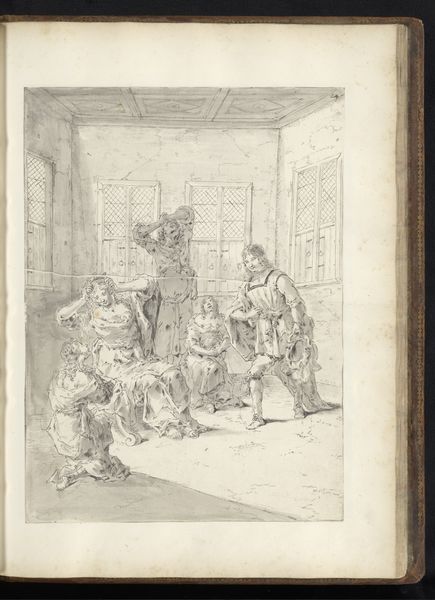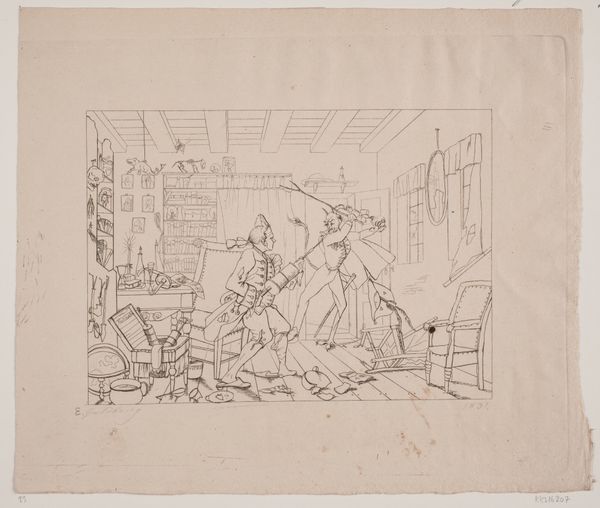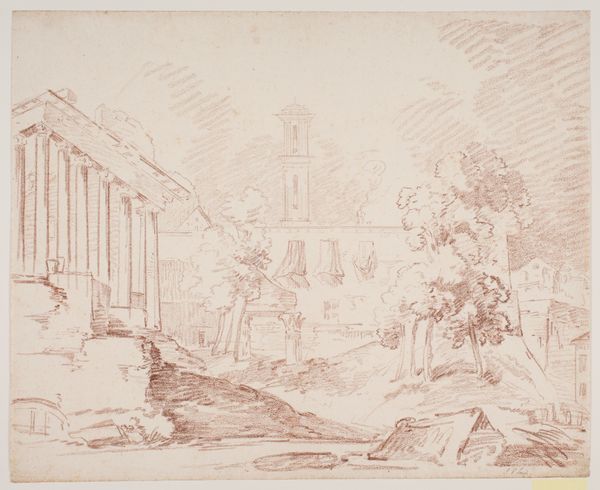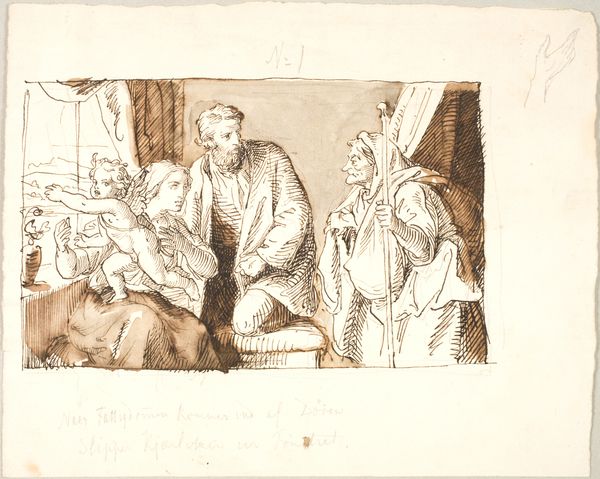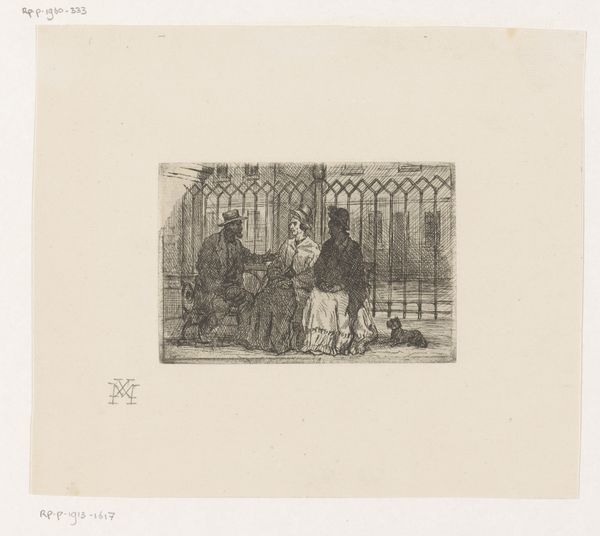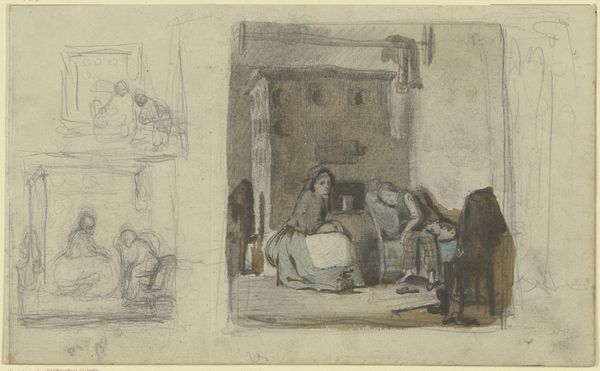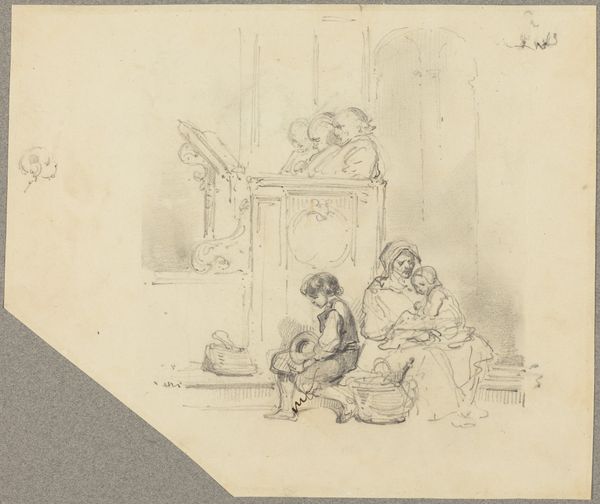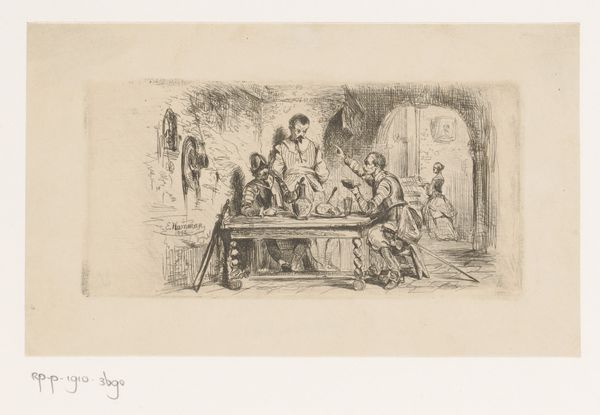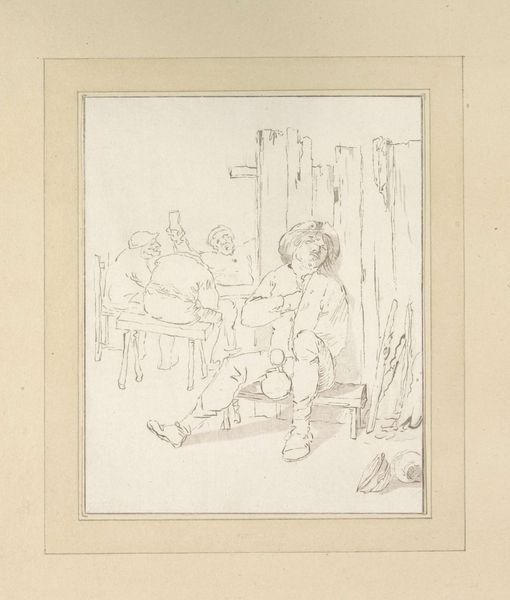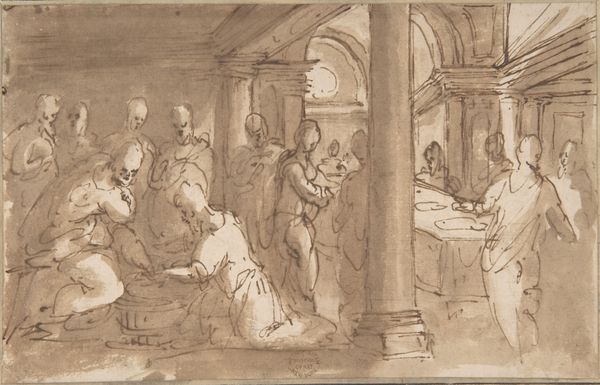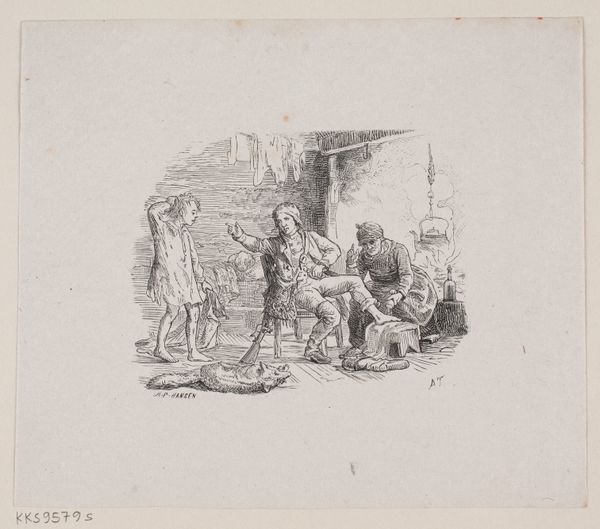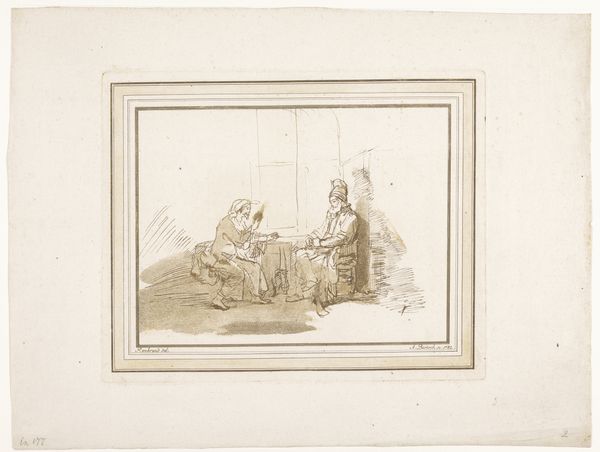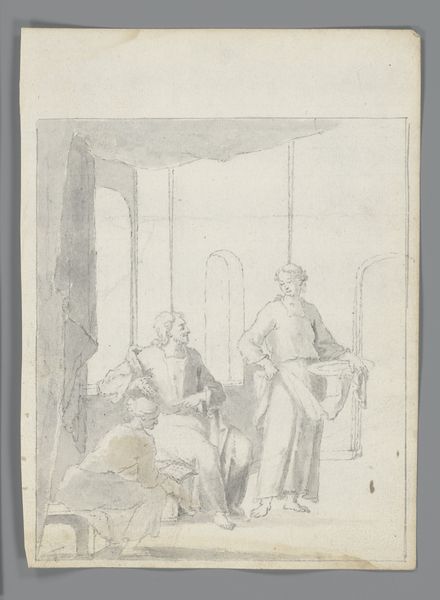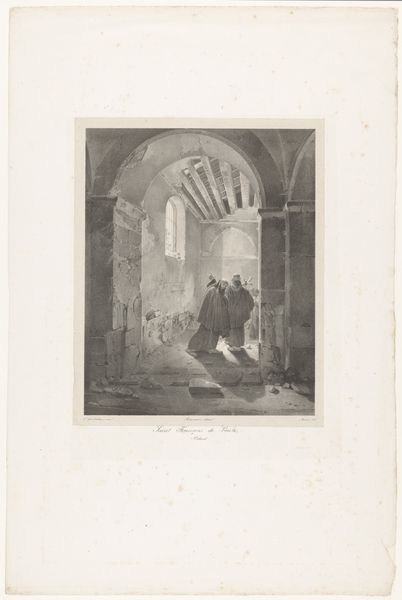
Study for "Gil Blas and the Archbishop" (from Sketchbook of Figure and Landscape Subjects) 1836 - 1841
0:00
0:00
drawing, paper, pencil
#
drawing
#
narrative-art
#
paper
#
romanticism
#
pencil
#
genre-painting
Dimensions: 6 5/8 x 8 1/4 in. (16.8 x 21 cm)
Copyright: Public Domain
This graphite sketch by Francis William Edmonds, captures a scene imbued with symbols of power and vulnerability. At its heart, the seated Archbishop, a figure of authority, contrasts sharply with the nervous stance of Gil Blas. Note the arched architecture, reminiscent of ancient Roman structures, adopted by the Church to convey its enduring legacy, a visual echo of empires past. Yet, the Archbishop's slouched posture suggests a weakening of this authority, a subtle crack in the façade. Consider how gestures of supplication and dominance have permeated art across millennia, reappearing in Roman friezes and Renaissance paintings alike. The act of kneeling, for instance, has evolved from a sign of religious devotion to a symbol of political submission. Here, Gil Blas's tentative approach speaks to a complex dance of power, a psychological drama played out in subtle visual cues. These motifs remind us that art is not created in a vacuum but emerges from a rich tapestry of cultural memory. These gestures tap into our collective understanding of hierarchy and influence. They persist, evolving with each new interpretation, constantly reshaping our perception of authority.
Comments
No comments
Be the first to comment and join the conversation on the ultimate creative platform.
